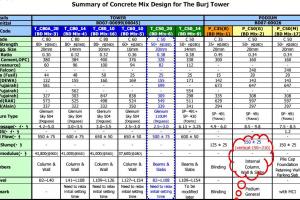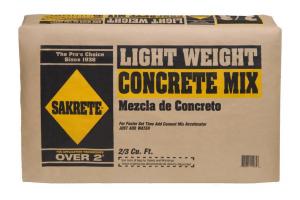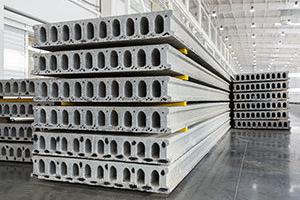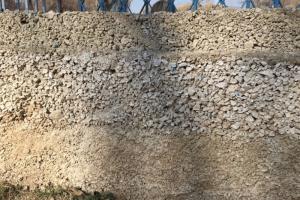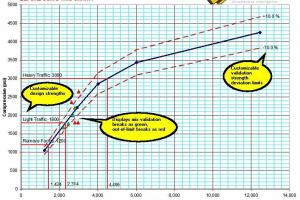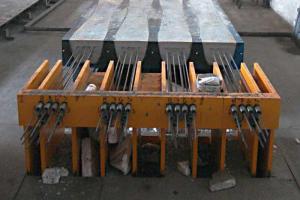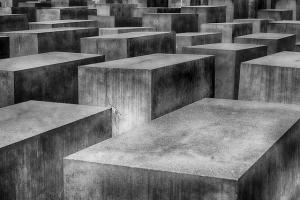De Icing of Concrete
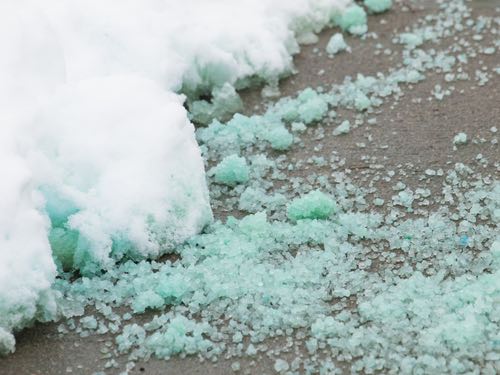
Definition of De Icing:
It is similar to freezing and thawing action
In winters to remove the ice over large structures e.g. deck of bridge etc the chemical sodium chloride NaCl or calcium chloride CaCl2 is added these chemicals decrease the freezing point of water and the ice melts. When ice melts they get dissolved in it. A super saturated solution (called brine if NaCl is used) is formed over the surface of the deck. The water that has percolated the concrete will tend to go the brine solution because of the osmotic pressure. While moving towards the brine tension is created and the phenomenon of scaling or wear and tear of top surface occurs. Thus, again in next cycle when again icing occurs as its top surface has already been damaged.
Why is top surface most effective against percolation of water?
-
The hydration occurs properly on the top later and is more strong then the inner.
-
There is a high cement concentration at the top.
- Because of bleeding the water comes at the top along with some cement which is properly smoothened. This smooth surface does not allow water to enter the concrete.
De Icing Salts of Concrete
Alkali Aggregate Reaction:
In the beginning the aggregate was considered to be an inert material but with the advancement in the concrete technology it was observed that some of the aggregate are reactive. This reactivity of aggregate causes durability problems. Some alkaline contents react with Ca(OH)2 and C3A. The reaction result in material which has a larger size causing the tensile forces and these tensile forces creates cracks.
There are two types of it.
-
Alkali Silicate reaction
- Alkali Carbonate reaction
Alkali-Silica Reaction [ASR]
The reaction between the alkalis (sodium and potassium) in portland cement binder and certain siliceous rocks or minerals, such as opaline chert, strained quartz, and acisic volcanic glass, present in some aggregates; the products of the reaction may cause abnormal expansion and cracking of concrete in service.
Silica SiO2 and Al2O3 when reacts with NaOH and KOH in a concrete mass, produces a paste. This paste is hydrophilic and when it absorbs water it swells up as this swelling has occurred after the hardening of concrete it creates tension and ultimately fractures the concrete.
Visual identification
This reaction if occurring can be recognized by regular network of cracks in structure.
Mechanism
This is a two step process
Step1:
Alkali hydrates + silica A-S-R
At this stage there are no cracks in the structure
Step2:
A-S-R + H2O Swelling/ Expansion
Factors affecting Alkali Silica Reaction
The factors affecting the alkali silica reaction are given as
Alkali content
If greater amount is present the reaction will occur more.
Water
As ASR is hydrophilic it absorbs a lot of water, the greater is the amount of water more swelled or expanded mass will be produced.
Silica content
It is primarily silica present due to which the reaction occurs.
- If one of the factors is not present reaction will not take place.
Controlling the Alkali Silica Reaction
To control the alkali silica reaction
-
The factors are controlled
-
Addition of mineral admixtures may also control the reaction as the silica in it consumes the alkalis.
-
By reducing the porosity, as if no water is allowed to enter the reaction cannot proceed.
Alkali Carbonate Reaction [ACR]
Dolomite=CaMgCO3
The reaction between the alkalis (sodium and potassium) in portland cement binder and certain carbonate rocks, particularly calcite dolomite and dolomitic limestones, present in some aggregates; the products of the reaction may cause abnormal expansion and cracking of concrete in service.
This reaction occurs in dolomite rocks. The dolomite crystals are scattered throughout the aggregate surrounding by calcite. When dolomite reacts with alkali hydroxide, dolomite disintegrate into MgCO3 and calcite. This MgCO3 when absorbs water expand causing tensile forces in concrete which creates cracks.
Sulphate Attack:
C3A when reacts with sulphate form tricalcium aluminosulphate also called Ettringite. They are needle shaped structures which entangles with each other and fasten the setting along with increase volume.
Once the concrete is hardened if the reaction between C3A and sulphate again occurs due to some residue material then the ettringite formation is known as Delay Ettringite Formation DEF which is very dangerous for the structure as it swells up to a big extent than that of the original reactant, this swelling cannot be accommodated in concrete and it fractures causing durability problems.
Chloride ingress/ Corrosion of Reinforcement:
The strongly nature of Ca(OH)2 (pH about 13) prevents the corrosion of steel reinforcement by the formation of a thin protective film of iron oxide on the metal surface; this protection is known as passivity. However if the concrete is permeable to the extent that chloride can penetrate right up to the reinforcement, and water and oxygen are present, then corrosion of reinforcement will take place. The passive iron oxide layer is destroyed when pH falls below about 11. The formation of rust results in an increase volume compared with the original steel so that swelling pressure will cause cracking and spalling of concrete.
- Saturated concrete
- Diffusion
- Partially saturated concrete
- Wetting and drying



